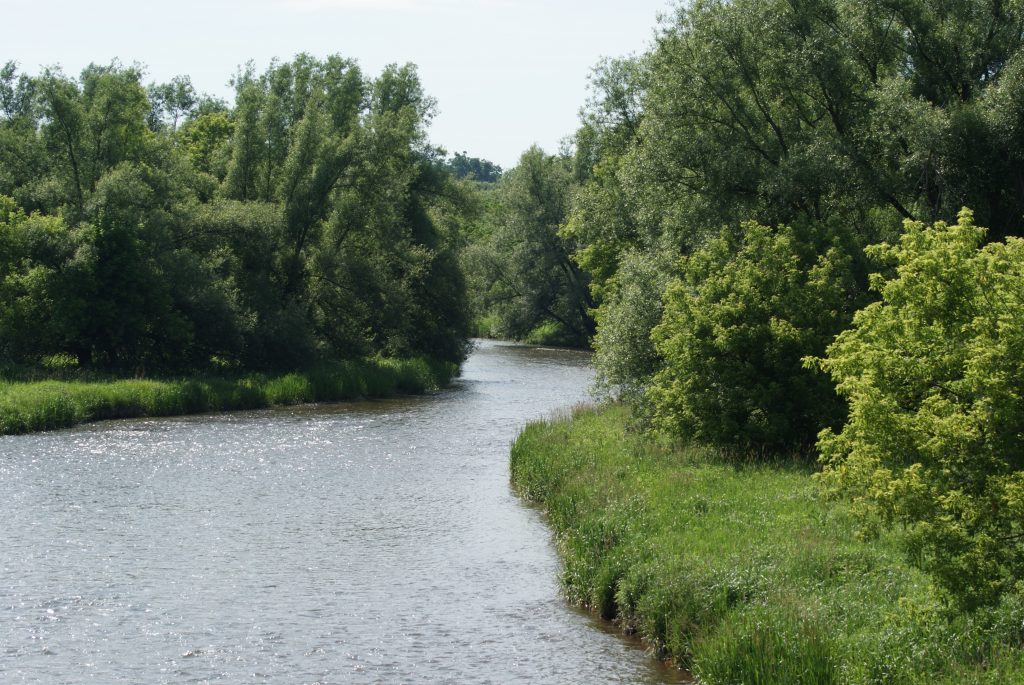In the 1950s, when the car was king, car-dependent sprawl subdivisions sprang up across the Greater Golden Horseshoe. We’ve learned a lot since then. We know now that more intensive growth is better for local economies, bringing savings to municipalities and residents.
We also know that building far-flung car dependent subdivisions damages our quality of life, health and our environment – not to mention causing loss of farmland and access to locally grown food. We have a better understanding these days that farmland has economic value, thanks to the local jobs that farms support, and the thriving local food, beer and wine industries that supply bustling local farmers’ markets, restaurants and more. It’s time to say goodbye to outdated sprawl.. The Growth Plan and the Greenbelt Plan work together to support resilient economic growth and development throughout the Greater Golden Horseshoe while protecting our forests and farms. They do this by putting farms and natural heritage off-limits to sprawl in the Greenbelt and by encouraging more concentrated, efficient urban development through the implementation of Growth Plan directions.
Choosing smart, efficient growth within our existing towns and cities allows us to make better use of our existing infrastructure. This can lead to lower taxes and requires less land so we can stop eating up farmland. By growing the Greenbelt in agricultural areas and along natural heritage systems throughout the Greater Golden Horseshoe we can move towards more sustainable growth patterns. (Want to make your voice heard? Tell Ontario to say goodbye to sprawl and yes to smart growth!)
Before the Growth Plan, it seemed like urban boundaries were just suggestions rather than hard edges, separating farms and urban areas. And the result? Sprawl sprang up across the Greater Golden Horseshoe. Big pipe extensions fed endless subdivisions, which left us with billions in municipal debt and contributed to the loss of 600,000 acres of farmland in southern Ontario between 1996 and 2006.
When we pave over prime farmland, we hurt our economy. A 2013 Ontario Federation of Agriculture study identified agriculture as one of Ontario’s largest economic sectors contributing 158,000 jobs and $26.6 billion in economic activity annually. And sprawl puts jobs on the farm at risk.
Sprawl also puts a big financial burden on municipal governments and taxpayers. That’s because it costs much more to build infrastructure like water pipes and wastewater systems to service subdivisions located far from already urbanized areas and where the homes are spread far apart.
In addition, Development Charges that developers pay rarely cover the full costs of this infrastructure. The gap is left to municipalities to cover, who pass it along to taxpayers. In the Greater Golden Horseshoe, too many municipal governments struggle with debt caused by financing infrastructure.
By growing the Greenbelt and changing our growth patterns from sprawl development to higher density, we can maximize our investment in infrastructure, like schools and hospitals, provide diverse housing options and limit farmland loss. Infrastructure such as roads, water and wastewater systems, hospitals and schools are essential to our communities but too often we don’t make the best use of these investments, leaving lands vacant and continuing to build low density developments. The 40 per cent intensification rate in the Growth Plan doesn’t go far enough and should be raised to 55% to match what is already being achieved by a few forward thinking municipalities
Higher densities in existing urban growth centres not only make more efficient use of our infrastructure, but also make it more affordable to provide infrastructure to communities. With the savings, more money is available to invest in public transit, and needed community services like parks, community centres and recreational facilities.
What does more efficient or dense growth mean?
It depends on the community’s size. In small towns, the Growth Plan encourages the growth of 2-3 storey buildings downtown to revitalize our main streets. In medium-size communities, it means 5-6 storey buildings, which are friendly to pedestrians and can infuse a block with energy when a mix of stores and restaurants are at street level. And in larger cities, the Growth Plan encourages 10-12 storey buildings, which aren’t out of place in a city centre like Toronto, or North York.
For a success story of efficient growth, look at Kitchener, Waterloo. The Waterloo region has developed a bold investment strategy to focus new commercial and residential development within existing urban areas, with a specific focus on the downtown core and at rapid transit stops. Waterloo has gone above and beyond the Growth Plan’s 40 per cent density target and successfully achieved a 55 per cent intensification rate. The city is building a light rail transit line, and both its rural and urban economies are thriving.
According to the Ontario Chamber of Commerce, Kitchener-Waterloo-Barrie is creating jobs at a rate that outpaces every other region. The region is expected to add 30,000 jobs over the next two years. Redevelopment in our cities and towns is an opportunity to support robust local economies and create vibrant complete communities where people can live, work, shop and play. All communities in the Greater Golden Horseshoe regardless of size benefit from more focused growth.
By focusing growth in towns and cities, local governments are in a better position to revitalize downtown districts which support local businesses and employment. Walkable main streets and a compact business district can encourage tourism and make it easier and more enjoyable for shoppers and visitors alike. People like to visit destinations where they can stroll the streets and browse the shops. By taking advantage of growth and development opportunities in already serviced areas we can reinvigorate our downtowns, as well as lessen the tax burden on taxpayers and have a larger tax base to support needed renewal projects, from transit to urban renewal.
Compact (dense) growth also helps retain our agricultural land base in Ontario, which is important if we are to remain a leader in the agricultural industry in Ontario. By growing in already urban areas, it means our farmland won’t be paved over. And it means porous soils and forests absorb carbon and help us mitigate climate change impacts.
The bottom line is higher densities in the Growth Plan will result in protecting our prime farmland and natural areas and creating the kinds of vibrant, healthy, walkable and connected communities that more of us actually want to live in. And that’s good news for taxpayers, for businesses, our economy and the environment.
You can help! Tell Ontario to say goodbye to sprawl and yes to smart growth!







